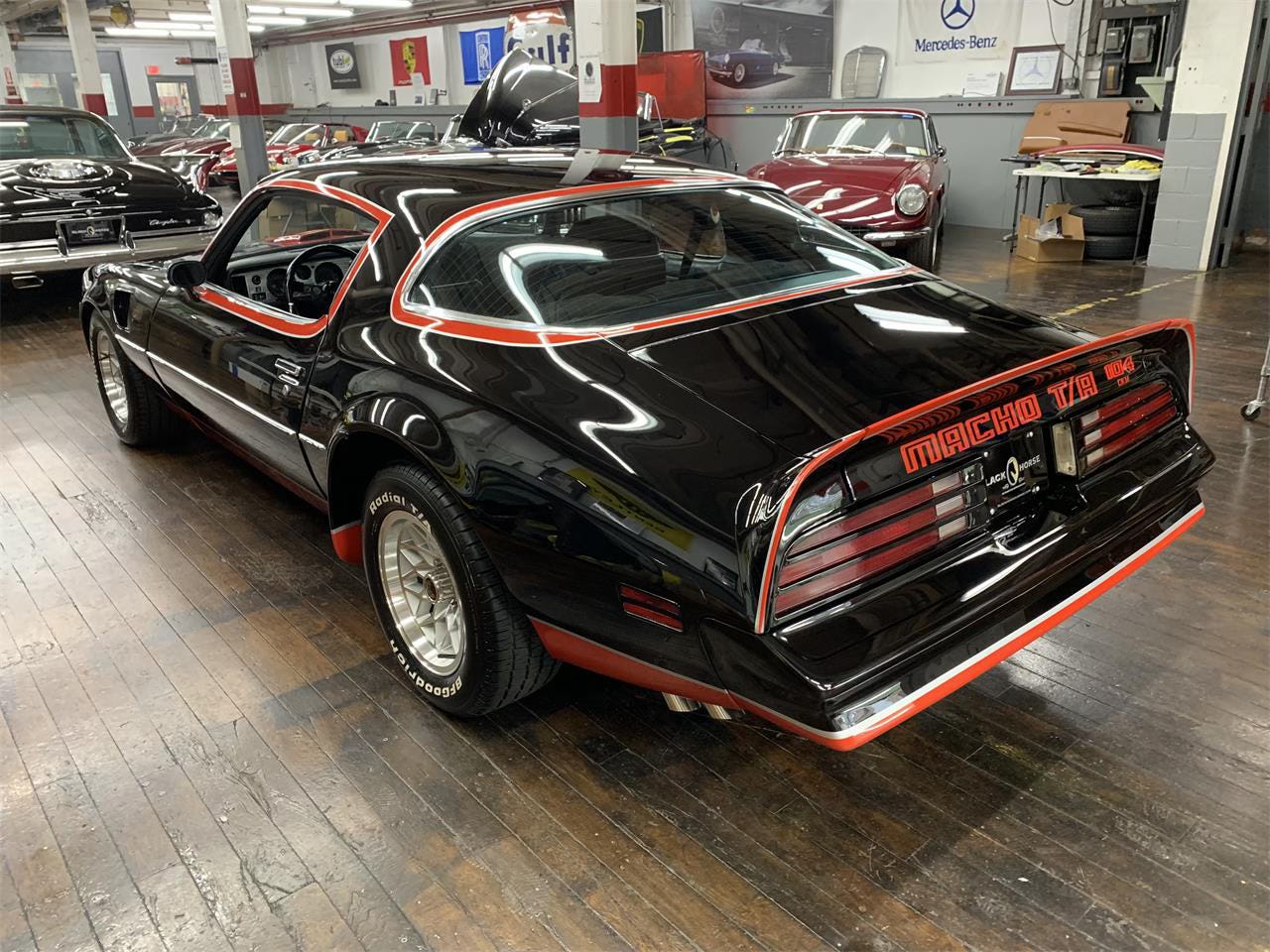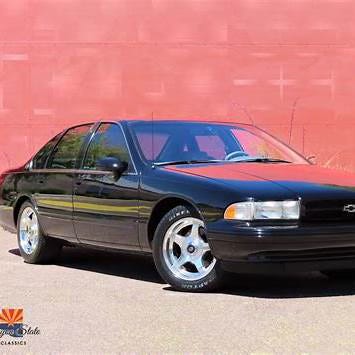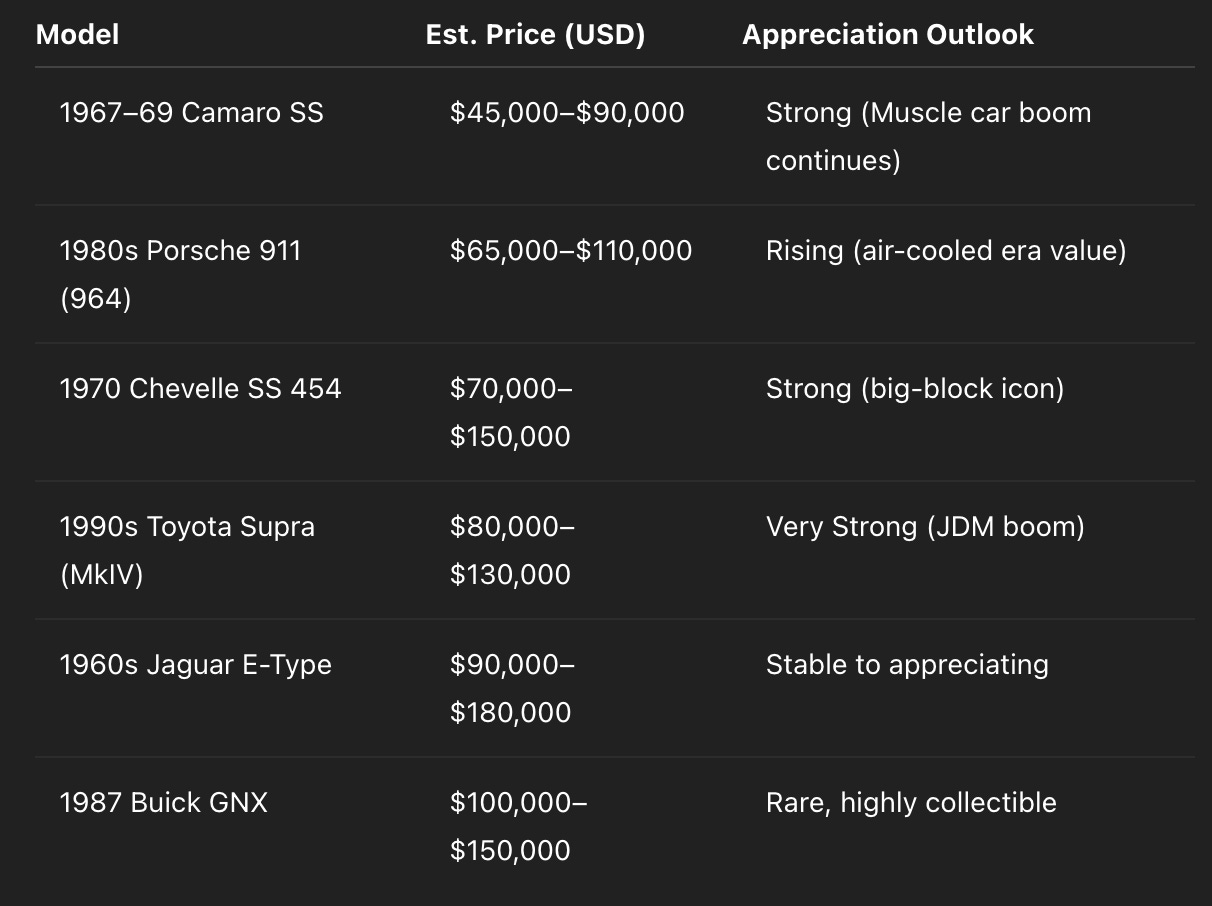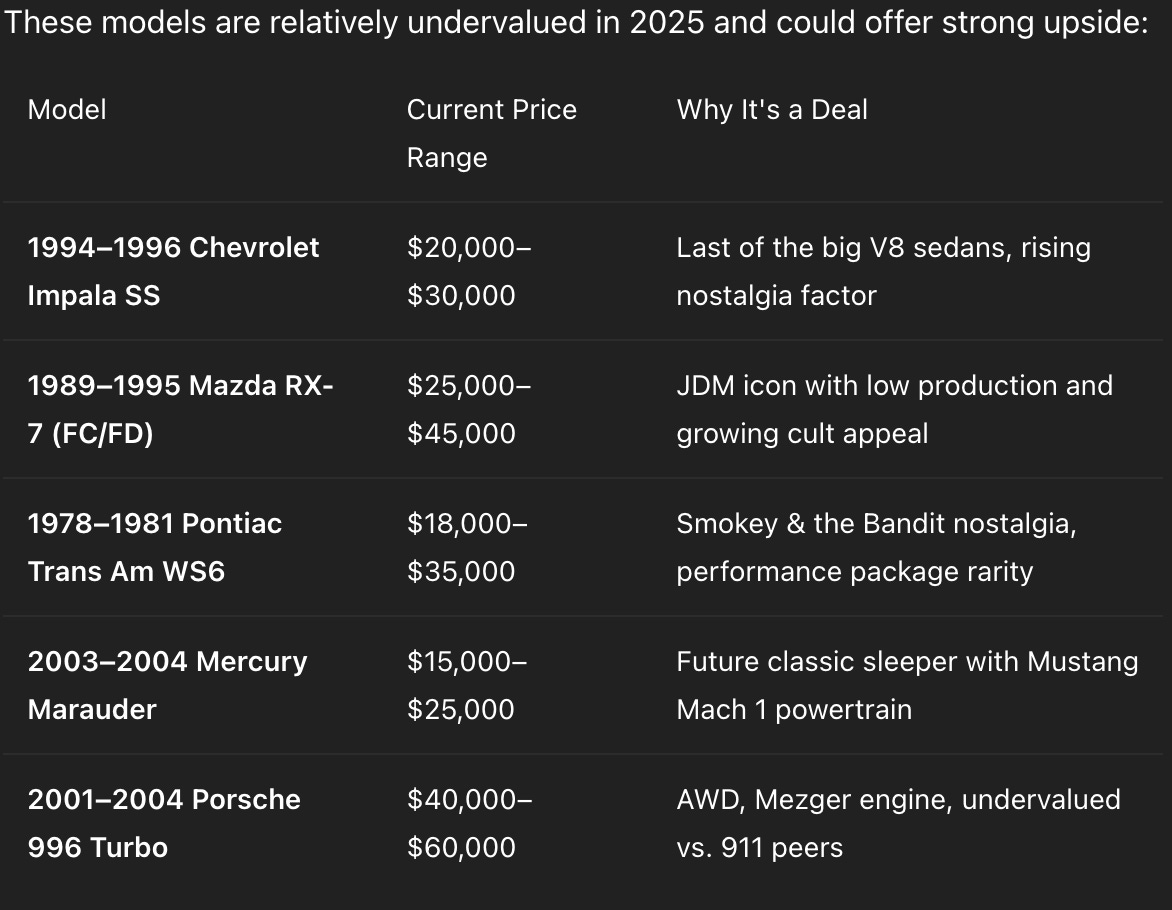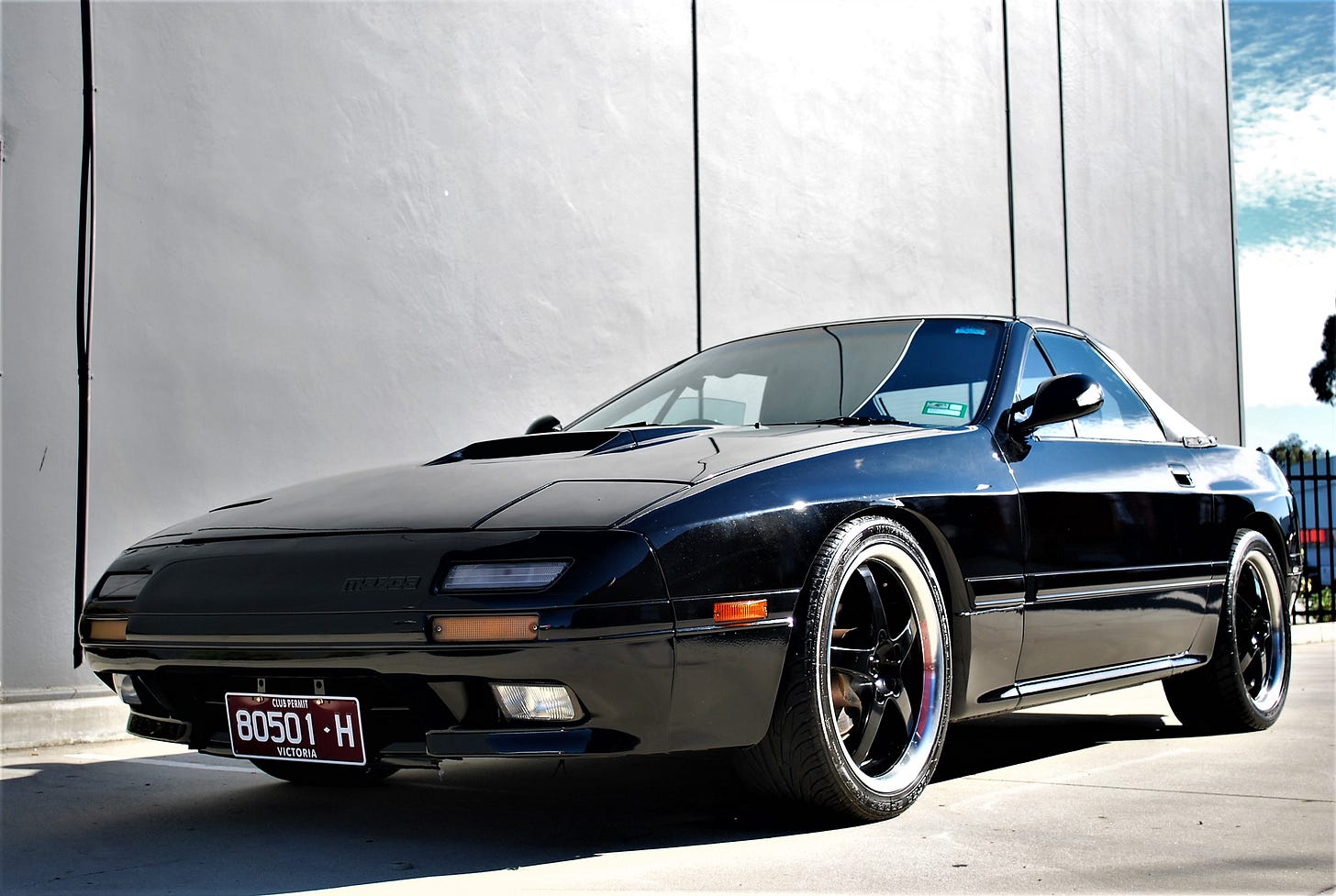Classic Car Investment: A Roadmap to Profitable Passion
By Rafael Benavente
Classic Car Investment: A Roadmap to Profitable Passion
Investing in classic cars is more than just collecting beautiful machines—it's about owning tangible assets that can appreciate over time while delivering a rewarding lifestyle. Whether you're a first-time buyer or a seasoned collector, this guide will help you understand the basics of classic car investing, which models to watch, and how to protect and grow your automotive portfolio
.
🚗 Why Invest in Classic Cars?
Classic cars combine emotional appeal with financial upside. Here's why they remain an attractive alternative asset:
Tangible and usable asset
Appreciation potential (select models have outpaced the S&P 500 over 10-year windows)
Tax benefits in some jurisdictions (as collectibles or long-term capital gains)
Enjoyment factor—you can drive your investment
According to Knight Frank's Luxury Investment Index, classic cars have risen over 185% in value over the past decade
.
🔢 Key Principles of Classic Car Investing
Buy What You Love: Emotional value often precedes market value. Passionate collectors make better caretakers and sellers.
Rarity Matters: Limited-production models or discontinued trims tend to hold or increase in value.
Originality is King: Matching numbers, original paint, and low miles significantly increase a vehicle's value.
Provenance and Documentation: A solid paper trail (service records, ownership history) adds legitimacy and resale appeal.
Condition over Customization: While mods may suit your taste, stock configurations appeal to investors
.
✨ Top Investment-Worthy Classics (as of 2025)
💎 Best Value Buys Right Now
These cars may still be affordable now but have the qualities (performance, rarity, and desirability) that tend to drive future appreciation
.
⚖️ Risks & Challenges
Maintenance costs can be high
Storage and insurance require planning
Market cycles can slow appreciation or reverse short-term gains
Liquidity: Unlike stocks, selling a classic car can take time
To mitigate risk, diversify your collection (e.g., European, American, Japanese), track value indexes (like Hagerty), and work with appraisers.
🌟 Tips for First-Time Buyers
Get a pre-purchase inspection (PPI) from a trusted classic car mechanic
Verify VIN, engine, and transmission numbers
Check auction histories and online marketplaces for comps
Store the vehicle in a climate-controlled facility
Join enthusiast forums and owner clubs for insight
⏳ The Long-Term View
Classic cars are best seen as long-term holds (5–10+ years). As the collector base ages and shifts (e.g., more millennials valuing JDM and 80s/90s icons), tastes evolve—but scarcity and originality remain universal value drivers.
In 2025, we’re seeing continued upward trends in rare muscle cars, low-mileage 90s icons, and Euro classics with clean histories.
🏆 Final Word
Investing in classic cars isn’t just about the numbers—it’s about connection. It’s about preserving history while potentially turning a profit. The best investments are the ones you’re proud to show off, maintain, and drive. Choose wisely, drive respectfully, and treat every restoration as part of your portfolio strategy.
If you're looking for model-specific recommendations or want help researching a vehicle's history before purchase, reach out anytime.
By Rafael Benavente



